How to Make a Subway Map with John Tauranac
Hear from an author and map designer who has been creating maps of the NYC subway, officially and unofficially, for over forty years!



The Dutch settlers landed on the tip of Manhattan in 1623, naming their new home New Amsterdam and lining up a battery of canons to defend it. Historic Battery Park (now known as The Battery) was where the early immigrants landed, and Castle Clinton, built with the intention of preventing a British invasion in 1812, was where immigrants were first directed before Ellis Island was built.
Today, the twenty-three acre park is the largest public open space in the Downtown section of Manhattan and Castle Clinton is the most visited National Park Service site in the country, receiving over three-million people annually. In keeping with its history, we’ve put together 10 things you might like to see and do in The Battery this Summer.

Built in anticipation of the war of 1812, Southwest Battery never had occasion to fire upon the enemy. In 1817 the fort was renamed Castle Clinton in honor of Dewitt Clinton, Mayor and later Governor of New York. In 1823, the fort was deeded to New York City, and the following year its name was changed to Castle Garden to reflect its rebirth as a restaurant and entertainment center. With a large influx of immigrants landing at docks near Castle Clinton, it reopened as a landing depot and the official immigrant processing center in August of 1855. The Federal Government took over control of the immigration processing, and the function of processing was moved to a larger and more isolated facility, Ellis Island.

In 1896, Castle Garden became the New York City Aquarium, housing 150 specimens including exotic fish and a Beluga whale, under the auspice of the New York Zoological Society. It was popular from the very first day, with over 30,000 visitors on opening day. It remained the city’s most popular attraction until 1941, when the Park Commissioner, Robert Moses, fought to tear the historic structure down in order to build a crossing from the Battery to Brooklyn. Preservationists mobilized and the structure was designated a National Monument in 1946. You can catch a glimpse of Castle Garden in its aquarium days in this video, the oldest surviving footage of NYC landmarks.
The popular Aquarium reopened in Coney Island, leaving Castle Garden to undergo a major rehabilitation in the 1970s. Today it is administered by the National Park Service, and is used as a departure point for tourists sailing to Ellis Island and the Statue of Liberty, with a small exhibit inside.

The Battery’s Beehives Photo via gigi_nyc.
Honeybees are not new to The Battery. In fact, they migrated alongside the Dutch to Lower Manhattan in the 1600s. So when beekeeping became legal in New York City in 2011, the colorful houses designed to look like historic buildings, started going up. NYC Beekeeping are overseeing the project known as BeeVillage in Battery Park. This all-volunteer group oversee about a thousand bees in each of the little house hives. The white beehive house in the front of the photo is designed to look like the historic John Brown House, said to be the oldest in New York. Tours of the hives are given for bee enthusiasts, and the bees pollinate the Park’s Urban Farm.
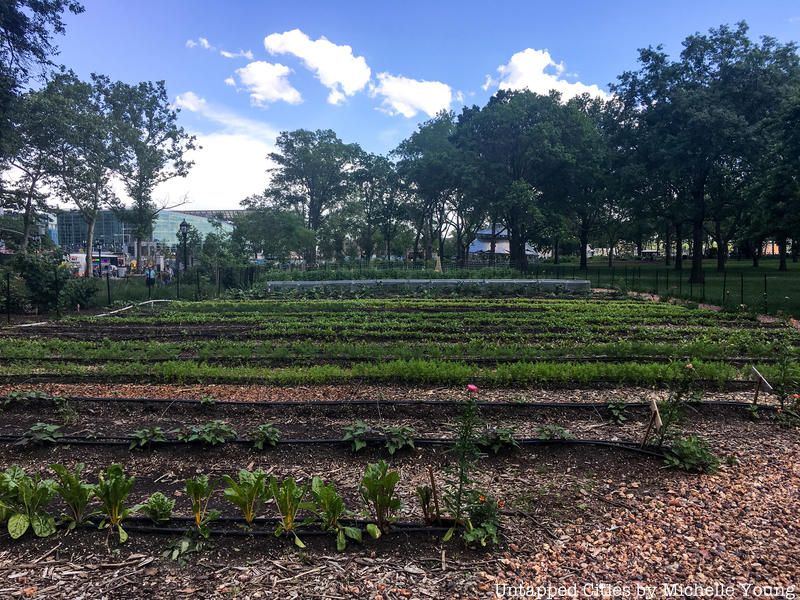
It all began in 2011 when the Millenium High School Environmental Club asked if they could plant a vegetable garden in The Battery. The project has grown to include eight schools with over 650 students. There are now 80 organic vegetable plots and it is the only public urban farm in lower Manhattan.
The Urban Farm at The Battery is used as an outdoor classroom, but the program also has workshops and volunteer opportunities open to the public. Produce grown on in the Battery Urban Farm is donated to participating school cafeterias, and during the Summer months the food is donated to local community partners. You can follow the Battery Urban Farm on Facebook.

Oysters, mussels and clams were once plentiful in New York Harbor. So plentiful, that in the 19th Century, New York City shipped shellfish all over the world with oysters and clams some of the country’s biggest exports. In the early 1600s there were over 200,000 acres of oyster reefs in New York Harbor. By the 1900s, toxicity levels in the water led to the disintegration the habitats. By 1906, the last oyster had vanished.
The map above shows how the first inhabitants of Manahatta, the Lenape, made use of the land at the southern tip, which was named Kapsee, meaning “sharp rock place.” Today it is illegal to eat any shellfish taken from New York Harbor and there are efforts to reintroduce oysters back into the environment.

The Alexander Hamilton U.S. Custom House was designed by Cass Gilbert and built from 1902-07 by the Federal Government to house the operations for the Port of New York. It was built atop former steamship offices, in the general vicinity of Fort Amsterdam, which had long been demolished
The building now houses The National Museum of the American Indian (since 1994), The U.S. Bankruptcy Court, an office of U.S. Customs and Border Patrol, and as of February 2013, home of The National Archives at New York City. This is quite a fitting location for the Archives, since they maintain historically significant records dating back to 1685. The National Archives is open to the public, with a small exhibition gallery. They also maintain a Research Center for school groups, educators and the public. The 45,000 square foot, seven-story building is listed in the National Register of Historic Places (1972), designated a National Historic Landmark (1976), and in 1979 the exterior and public interior spaces became City Landmarks.
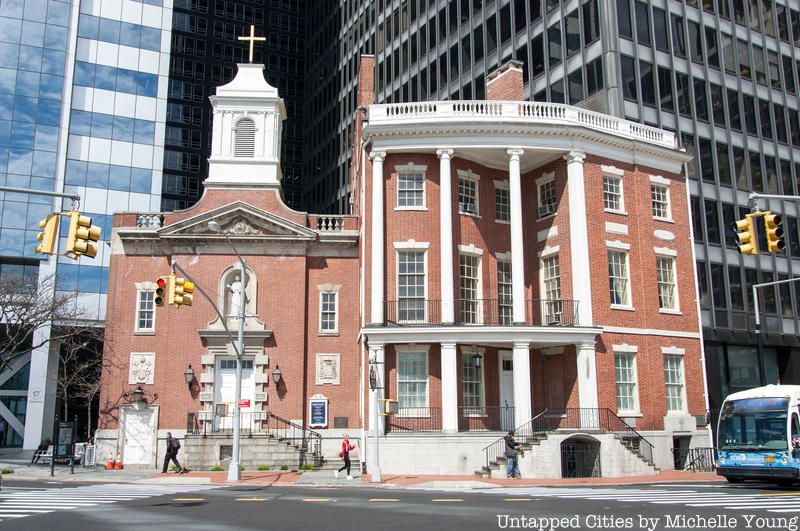
7 State Street originally belonged to James Watson, the first Speaker of the New York State Assembly and a prosperous importer and exporter. After the Civil War, the Irish Author Charlotte Grace O’Brien bought the house with the intention of using it as a way-station to house young Irish immigrant girls. It was known as the Mission of Our Lady of the Rosary, and surviving ledgers of the church list more than 60,000 young women sheltered in the mission. She helped the young women find employment, placing many of them in homes as domestics.
The Archdiocese acquired the building as well as the adjacent building, 8 State Street, which had been the residence of Elizabeth Ann Bayley Seton (1801-1803), Founder of Sisters of Charity and the first native-born American to be canonized. Today, 7 State Street is used as a rectory and 8 State Street is the Seton Shrine and Church of our Lady of the Rosary. The Shrine of St. Elizabeth Ann Seton, Church of Our Lady of the Rosary is open for Mass and offers a Historic Church Walking Tour.
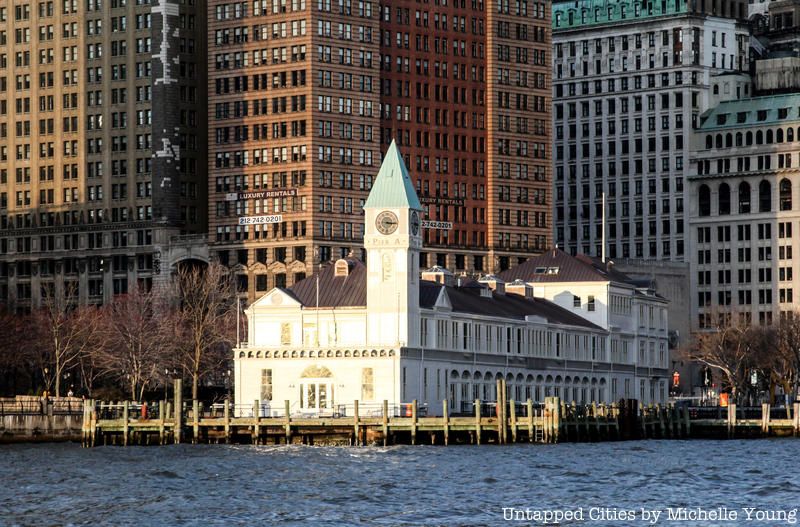
Constructed in 1884-1886 for use as a police department harbor patrol, Department of Docks, and later the home to the New York Fire Department Marine Division, the Pier extended 300-feet into New York Harbor. In 1919, as a memorial to the American Soldiers and Sailors who lost their lives in World War I, a ship clock and bell were installed in the watchtower. It was the first World War I memorial erected in the United States and it is one of only two clocks on the Eastern seaboard whose chimes ring the hours in ship’s time. The building was added to the National Register of Historic Places in 1975 and was designated a NYC Landmark in 1977.
Left vacant in 1992, Pier A was beautifully restored and reopened last year, with dining choices both indoors and out.
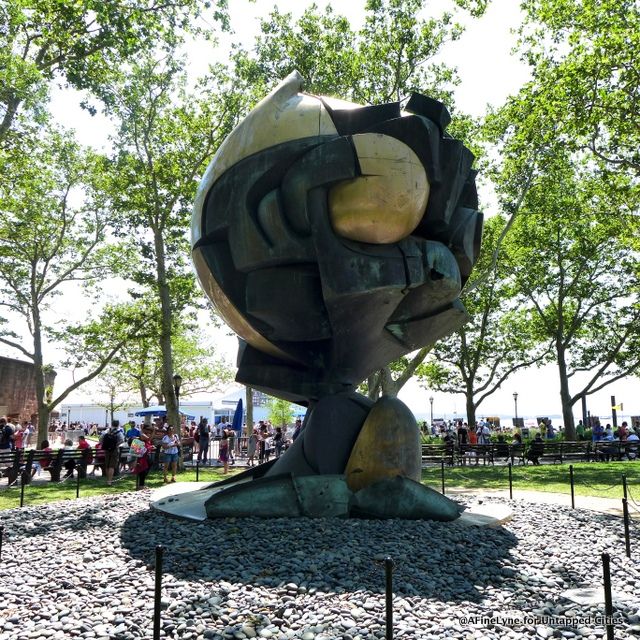
The Sphere, standing twenty-five feet tall, was to symbolize world peace through world trade, and for three decades stood at the center of the plaza of the World Trade Center. Five months after the September 11 attacks, the sculpture was recovered from the rubble and moved to The Battery on March 11, 2002 and formally rededicated with an eternal flame on September 11, 2002, as a memorial to the victims of September 11.
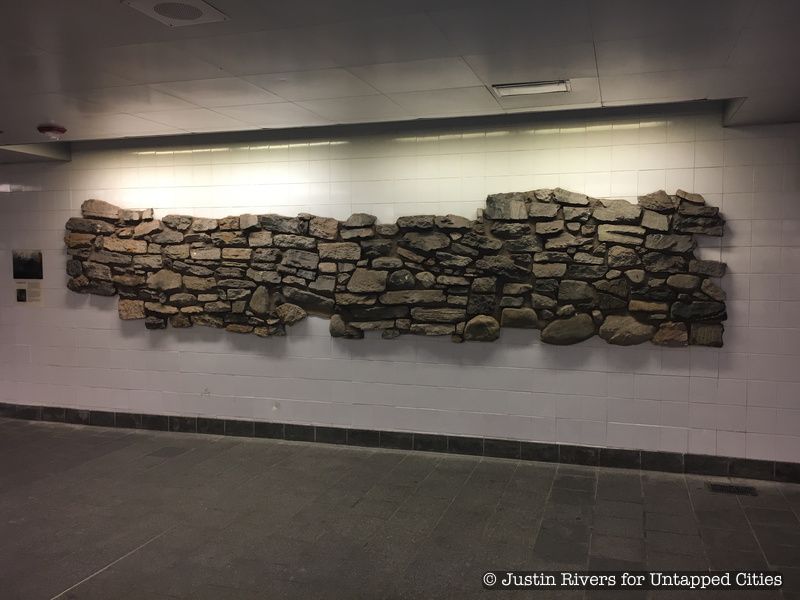
In 2005, while building a new South–Whitehall Street station complex, builders working on the new station found remains of a 200-year old stone wall. After careful analysis, it was found to be the oldest man-made structure still in place in Manhattan. 250,000 individual artifacts and four walls were found in the excavation. A portion of one wall was placed on temporary display inside Castle Clinton. Another portion of the historic wall was embedded permanently into the entrance of the newly constructed station. Robert Tierney, chairman of the NYC Landmarks Preservation Commission said “This wall most likely is a portion of the gun batteries that once protected the city in the late 17th and 18th centuries and gave rise to the modern park name.”
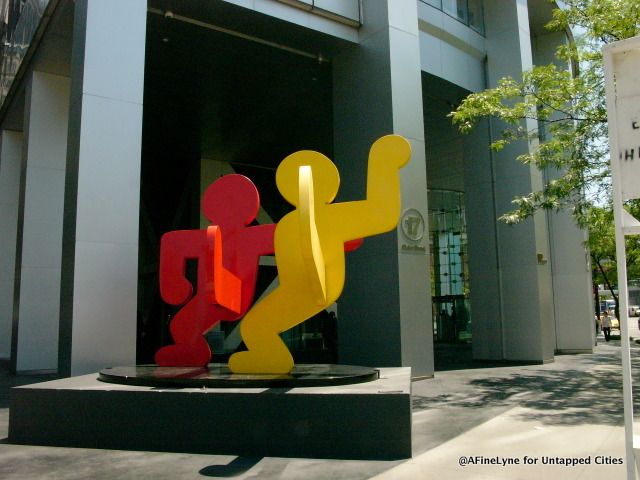
“Untitled, (Two Dancing Figures)” 1989 Keith Haring
As you emerge from the historic building housing the #4/5 subway lines at Bowling Green, you may notice the very colorful Keith Haring sculptures on the plaza in front of 17 State Street. When RFR redesigned their public plaza, they added fixed wood benches for seating underneath newly planted trees and two Keith Haring sculptures–one on either side of the entrance.
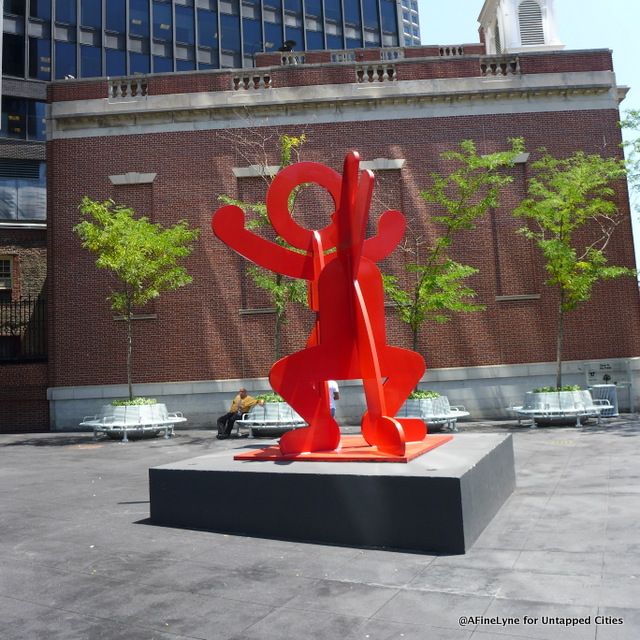
“Untitled, (Figure Balancing on Dog)” 1986 Keith Haring
In addition, we look forward to the completion of the Seaglass Carousel in August.

The SeaGlass Carousel in The Battery, an aquatic-themed carousel, would finally open officially on August 20th. Designed by WXY architecture, the carousel takes the form of a giant nautilus shell that will house 30 large luminescent fish figures (sponsored at $100,000 a piece) you can sit in. Recently, we got a glimpse of those said fish along with the latest on the exterior construction. See more photographs of the SeaGlass Carousel here.
Next, read about 14 beautiful vintage subway entrances in NYC. You can contact the author at AFineLyne
Subscribe to our newsletter